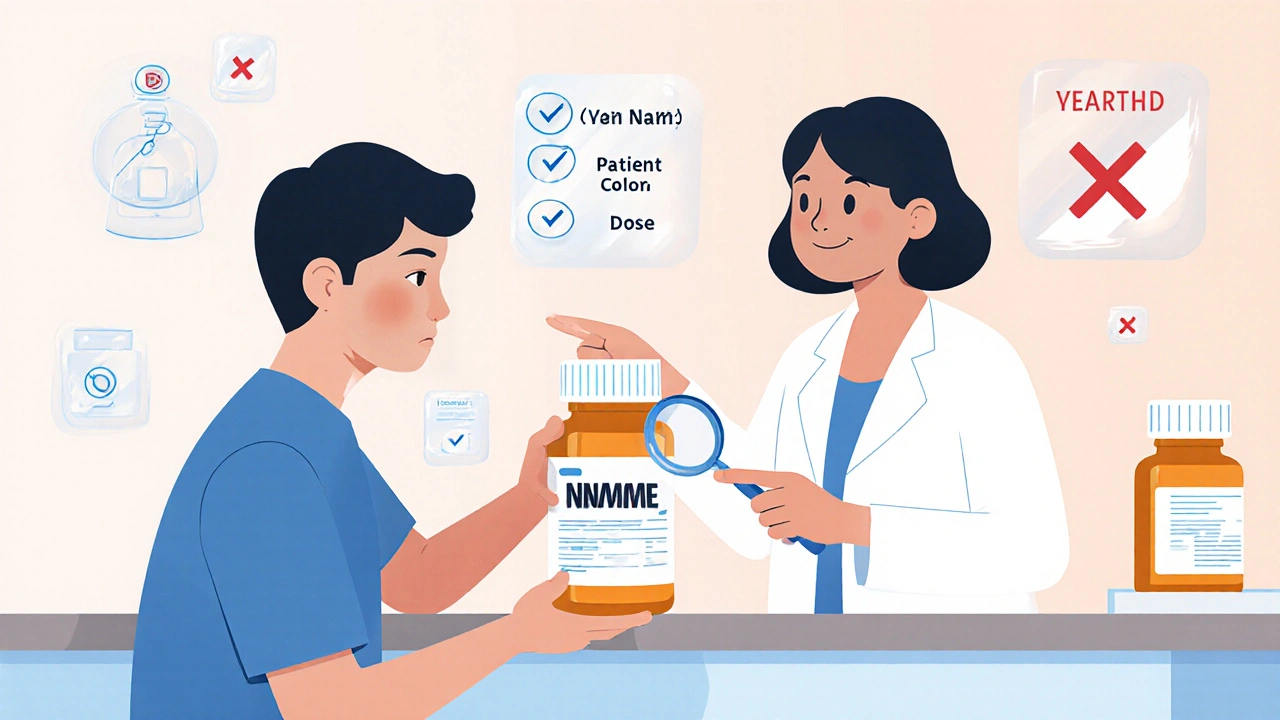 20
Nov,2025
20
Nov,2025
Don’t Just Take It-Check It
You hand over your prescription. The pharmacist fills it. You grab the bag and walk out. But what if the pill in that bottle isn’t the one your doctor ordered? Or what if the dose is wrong? Or worse-what if it’s someone else’s medicine?
It sounds scary, but it happens more than you think. In 2022, over 12% of pharmacy claims reviewed by Medicare contained errors that could have been caught if a patient had simply paused to check. That’s not a rare mistake. That’s a system gap-and you’re the last line of defense.
Why This Matters: The Real Cost of a Wrong Pill
Every year, more than 1.5 million people in the U.S. are harmed by medication errors, according to the American Society of Health-System Pharmacists. That’s not just a number. That’s someone’s parent, sibling, or friend getting sick because the wrong pill was handed out. Some errors cause hospital visits. Others lead to long-term damage. And many? They’re completely avoidable.
The good news? When patients check their prescriptions before leaving the pharmacy, errors drop by nearly 37%. That’s not magic. That’s you paying attention.
The 7-Point Prescription Check: Do This Every Time
Spending three minutes checking your prescription isn’t being difficult. It’s being smart. Here’s exactly what to look for.
1. Your Name and Date of Birth
Look at the label. Does it say your full legal name? Not “John” if your name is “Jonathan.” Not “J. Smith” if your last name is “Smithson.” And is your date of birth correct? These are the two official identifiers pharmacies are required to use. If either is wrong, stop. Ask why. This catches 18% of all errors-like when someone else’s prescription gets mixed up.
2. The Medication Name
Is the name spelled right? Does it match what your doctor told you? Generic names can be confusing. For example, “metoprolol” might be listed as “Lopressor” or “Toprol.” If you’ve never heard the name before, ask: “Is this the same as what my doctor prescribed?” Many patients assume the pharmacist knows best-but pharmacists are human. They get distracted. One pharmacist on Reddit said he once handed out a blood pressure pill instead of a diabetes pill because the bottles looked similar. The patient caught it.
3. The Strength and Dosage
Did they give you 5 mg or 50 mg? This is the #1 type of error. According to the Institute for Safe Medication Practices, 34.6% of all mistakes involve the wrong dose. Check the label: “20 mg tablet” or “500 mg capsule.” Now, compare it to your doctor’s note or the original prescription you were given. If you’re unsure, ask: “Is this the same strength I got last time?” If your last refill was 10 mg and now it’s 20 mg without your doctor saying so-pause. Call your doctor.
4. The Quantity
How many pills are in the bottle? If your prescription says “30 tablets,” but you count 28? Ask. If it says “60 capsules,” but you get a bottle with 100? Ask. Nine percent of errors involve the wrong quantity. And here’s a pro tip: count them right there. Don’t wait until you get home. One in five quantity errors are caught just by counting on the spot.
5. The Instructions
“Take one by mouth daily” sounds simple. But what does “daily” mean? Morning? Night? With food? Look for abbreviations like “QD” or “BID”-these mean “once daily” and “twice daily.” If you can’t read the label, ask for a larger print version. Most pharmacies have magnifying glasses or can print a clearer label. And if the instructions say “take as needed,” ask: “What does that mean for me?” Too many people guess-and end up taking too much or too little.
6. The Expiration Date and Packaging
Check the expiration date. Is it still good? If it’s expired, don’t take it. Even if it looks fine, medicine loses strength over time. And look at the bottle. Is the seal broken? Is the pill color wrong? If your usual blue pill is now white, that’s a red flag. Four percent of recalled medications reach patients because they’re expired or mispackaged. Don’t let that be you.
7. Controlled Substances: Extra Checks
If you’re getting opioids, sleeping pills, or strong painkillers, there’s more to check. Pharmacists must verify your address and confirm the prescription is legitimate. But you should too. Does the label say “Schedule II” or “Controlled Substance”? If you’re not sure, ask. These drugs have stricter rules-and more room for fraud. If the pharmacy doesn’t ask for ID or doesn’t seem to care, that’s a warning sign.
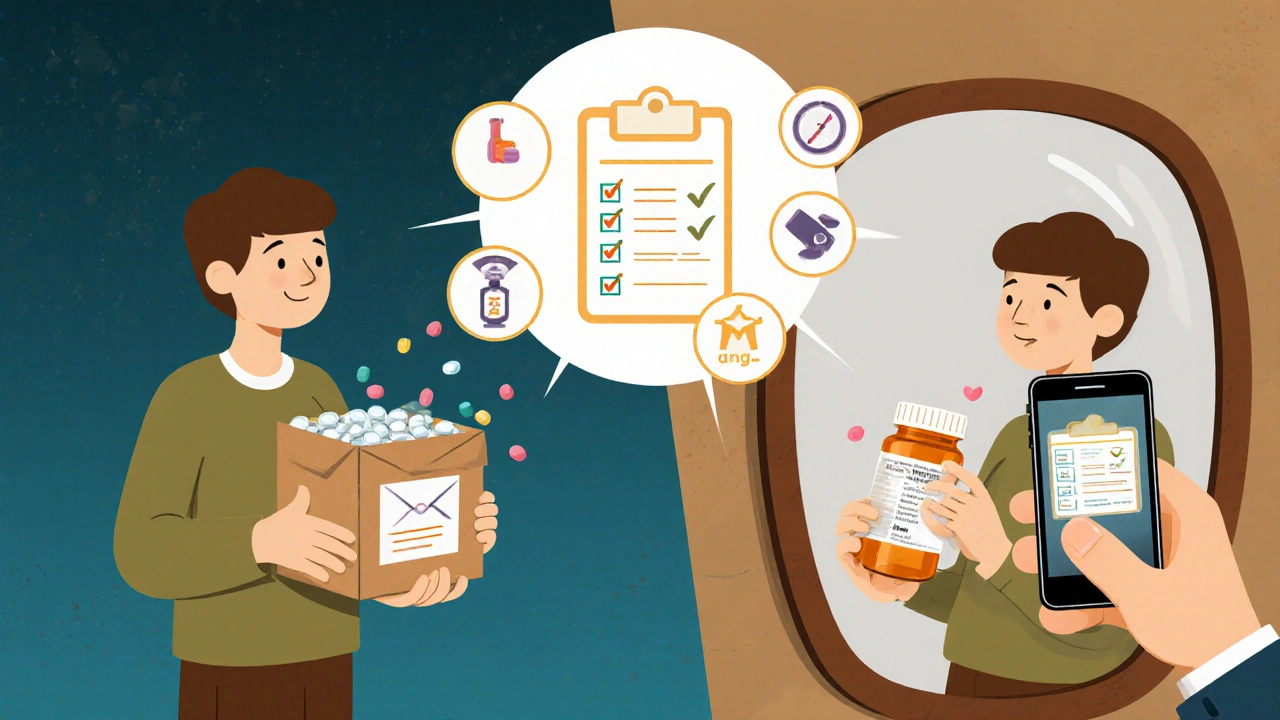
What to Say When You’re Not Sure
Don’t be shy. Pharmacists expect these questions. In fact, 92% of them encourage patients to ask. Here are three simple phrases that work every time:
- “Can you show me the actual bottle before you label it?”
- “Is this the same medication I got last month?”
- “What should I do if I miss a dose?”
That last one is important. Nearly half of patients don’t know what to do if they skip a pill. And that uncertainty leads to dangerous habits-like doubling up.
What If the Pharmacist Dismisses You?
Some staff are rushed. Some are overworked. And yes-some get annoyed when you ask questions. But you have every right to verify your medicine.
If they brush you off, say: “I’m just making sure everything’s correct. I’ve heard of mistakes happening, and I want to be safe.” If they still won’t help, ask to speak to the manager. Or better yet-call your doctor’s office and ask them to confirm the prescription. Most clinics have a nurse on call who can check.
And here’s something to remember: pharmacies with 4.2-star ratings on Trustpilot are nearly four times more likely to take patient concerns seriously than those with 3.5 stars. Your feedback matters.
What About Mail-Order or Online Pharmacies?
Mail-order prescriptions are convenient-but they’re riskier. A 2022 study found they have 40% more errors than in-person pharmacies. Why? No face-to-face check. No chance to see the pills before you take them.
When you get a mail-order prescription, open it in front of a mirror. Lay everything out. Check the label. Count the pills. Compare the color and shape to your last refill. Take a photo of the label with your phone. That way, if something’s wrong later, you have proof.
And always keep the original packaging. Don’t throw it away. You might need it to prove what you were given.
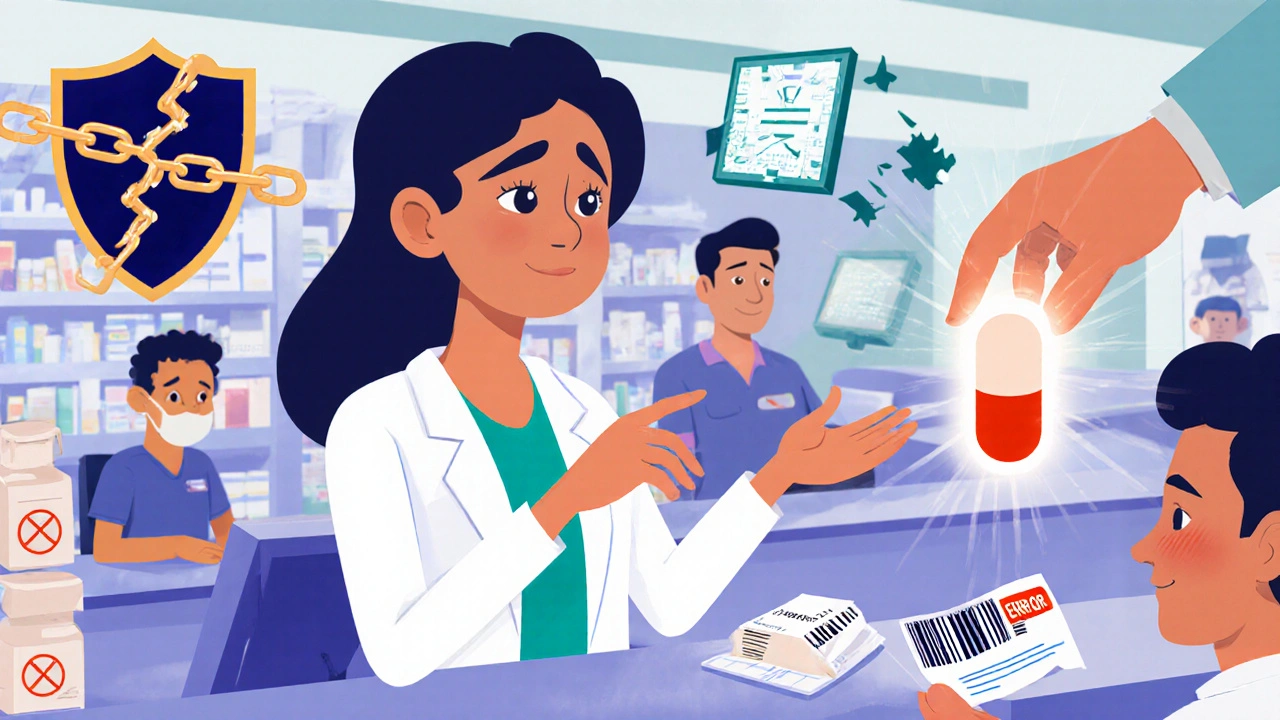
Technology Isn’t Perfect-But It Helps
Most pharmacies now use barcode scanners. That’s good. But even with scanners, errors happen. Why? Because the barcode might be scanned on the wrong bottle. Or the system might pull the wrong drug from the database.
That’s why patient verification still matters. Scanners catch 84% of errors-but not all. You catch the rest.
Some pharmacies now offer digital verification stations. You scan the barcode with a tablet and see a picture of the pill. It’s not everywhere yet, but if you see one, use it. It’s like a safety net you can control.
Final Thought: You’re Not Being Difficult-You’re Being Smart
Medication errors aren’t caused by evil pharmacists. They’re caused by busy days, tired staff, confusing labels, and rushed systems. You can’t fix the system. But you can fix your part of it.
Next time you pick up a prescription, don’t just grab it. Pause. Look. Ask. Count. Confirm.
Three minutes could save you from a hospital stay. Or worse.
Frequently Asked Questions
What should I do if I find an error on my prescription label?
Stop. Don’t take the medication. Ask the pharmacist to double-check the prescription with your doctor’s office. If they refuse or seem dismissive, ask to speak to a manager. You can also call your doctor directly to confirm the prescription details. Keep the bottle and label-this is important evidence if the error leads to harm.
Can I ask for a printed copy of my prescription details?
Yes, and you should. Most pharmacies will give you a printed sheet with the medication name, dose, instructions, and reason for use. If they don’t offer it, ask. Having this in writing helps you compare it to what you’re given and makes it easier to show your doctor later if something doesn’t match.
What if the pill looks different from my last refill?
That’s normal if you switched from brand to generic-but you should still check. Generics look different but have the same active ingredient. Ask the pharmacist: “Is this the generic version of my usual pill?” If they say yes, ask them to show you the label that says “generic equivalent.” If they say no, and the pill looks wrong, don’t take it. Call your doctor.
Should I check my prescriptions even if I’ve been taking the same medicine for years?
Yes. Even long-term medications can be misfilled. Doses change. New generics appear. Labels get printed wrong. One woman in Melbourne took the same blood pressure pill for 12 years-until a refill came with a different color and shape. She didn’t question it. She took it. Three days later, she had a near-fatal drop in blood pressure. The pharmacy had given her a different drug entirely. Always check, no matter how long you’ve taken it.
Are there apps or tools that help me verify my prescriptions?
Yes. The FDA’s Drugs@FDA app lets you search for drug names and see what they look like. You can also use your phone’s camera to zoom in on tiny print on labels. Some pharmacies offer apps that show images of your meds before pickup. But don’t rely on apps alone-always physically check the bottle and label. Technology helps, but it doesn’t replace your eyes and questions.

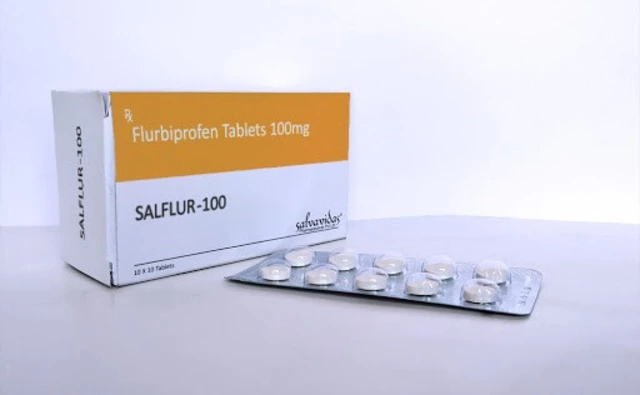
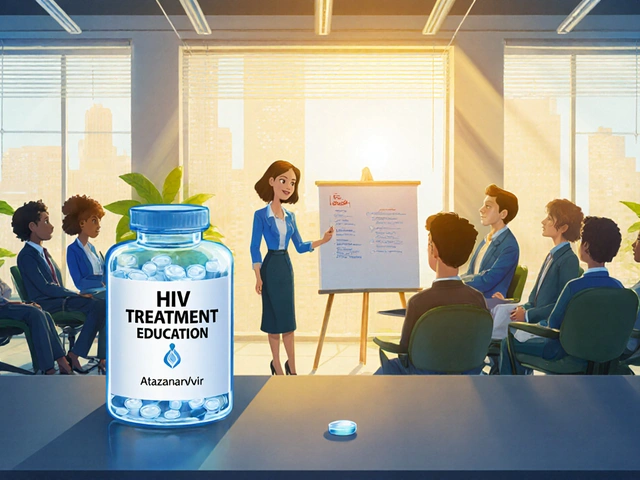


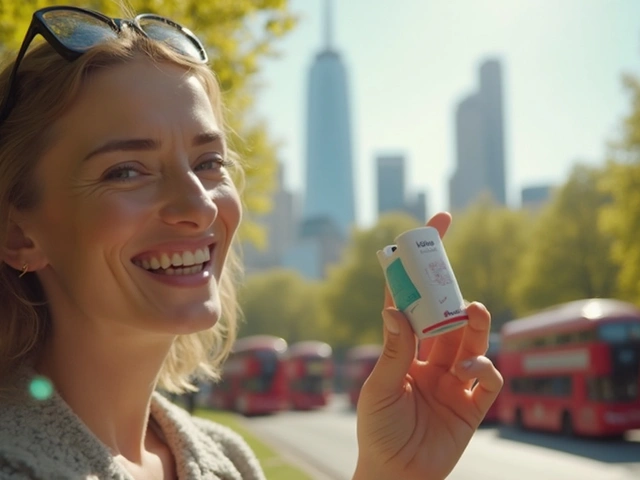
I used to just grab my scripts and run till my grandma nearly died from a 10x dose of metoprolol. Now I check everything. Seriously. Three minutes. That's all it takes. Don't be that person who blames the pharmacy when you're in the ER because you didn't look at the label
In India we dont even get labels half the time. Pharmacist just hands you a plastic bag with pills and says take one in morning one at night. No name no dose no nothing. I had to learn to recognize my meds by color and shape. Its wild how lucky we are to even have labels here
This is why the system is rigged. Pharmacies are owned by big pharma. They want you to mess up so you need more meds. I saw a guy get 50mg of oxycodone instead of 5mg. He died. The pharmacy paid a fine. Then they opened another store two blocks away. Its a business model bro
I really appreciate this checklist. I'm usually too anxious to ask questions at the pharmacy but this gives me a script to follow. I printed it out and keep it in my wallet now. I still feel nervous but at least I know what to look for
I think it's important to note that while patient verification is crucial, it's also a burden that shouldn't fall entirely on the individual, especially when considering elderly, disabled, or neurodivergent patients who may not have the cognitive capacity or physical ability to check every label, and while the 37% reduction in errors is impressive, we must also push for systemic reforms in pharmacy workflow design, staffing ratios, and labeling standards to truly address the root causes of these preventable errors, because relying on patients to be vigilant every single time is unsustainable and unfair
The real question is why do we trust machines and corporations with our lives but not our own eyes. We scan barcodes, rely on algorithms, and hand over control. But the body doesn't care about databases. It only reacts to what's in the pill. So maybe the real medicine is awareness
This is absolutely essential information!!! 🙌👏❤️ I cannot believe how many people just blindly take pills without checking!!! I have a spreadsheet with every medication I've ever taken including dosage, expiration date, pharmacy name, and pharmacist initials!!! I even take photos of each bottle with my phone and tag them with the date!!! You're not being difficult-you're being a MEDICAL ADVOCATE!!! 💪💊
Nigeria has better pharmacy safety than this. We have no barcode scanners but we have respect. Pharmacist asks you name, asks doctor name, asks why you need it. If you look confused they call the doctor. No one just hands you pills. You think this is normal? This is why your system is broken
I work at a pharmacy and I can tell you this: we hate when people don't check. We'd rather you ask 20 questions than have someone die because we were tired. I once caught my own mistake because a guy counted his pills and said 'this is 10 more than last time'-I almost hugged him. We're not robots. We're humans who forget. So thank you for checking. Seriously
I used to think checking my meds was paranoid until my mom took the wrong blood thinner and ended up in ICU for three weeks. Now I check everything. Even the same pill I've taken for 15 years. I hold it up to the light. I read the label out loud. I call the pharmacy if it looks different. I don't care if they think I'm weird. I'd rather be weird and alive than quiet and dead
America lets corporations run healthcare. You think a pharmacy cares if you live or die? They care about profit. This checklist is just a bandaid. The real solution? Nationalize pharmacies. Take them out of corporate hands. Then maybe we won't need to check every pill like we're in a spy movie